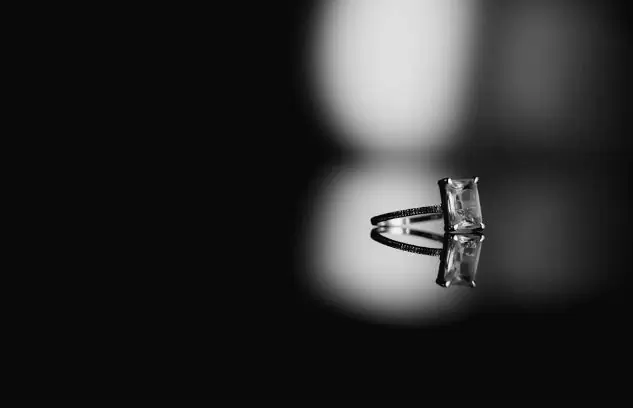How To Draw Dreads
Dreadlocks are a unique hairstyle that has been around for centuries. It is often associated with the Rastafarian culture and has become popular recently. Drawing dreadlocks can be challenging, but it can be easy with the right technique.
Start by drawing the head’s outline and sketching where you want to place your dreadlocks. Remember that dreads come in different shapes and sizes, so vary them as you draw. Use long, curved lines to create each dreadlock, ensuring they overlap slightly.
Use shading techniques such as cross-hatching or stippling to add texture and depth to your drawing. It will help give your dreads a realistic look and feel. Finally, remember that practice makes perfect for drawing dreads – so don’t be discouraged if your first attempt doesn’t turn out exactly how you envisioned it.
In conclusion, drawing dreadlocks requires patience and attention to detail. Start by sketching out where you want each dreadlock to go before using long curved lines to create them. Don’t forget about shading techniques for added texture and depth!
How to draw dreadlocks
Dreadlocks are a popular hairstyle that has been around for centuries. Drawing them can be challenging if you don’t know where to start, but with a few tips and techniques, you can create realistic-looking dreadlocks in no time. The first step is to ensure you have the right tools, such as pencils or markers of varying thicknesses and paper that can handle shading.
Once you have your tools ready, start by sketching out the basic shape of the head and hairline. Next, draw long lines to represent each dreadlock. These lines should be thicker at the top and gradually thin out toward the end of each lock. Add texture by drawing small bumps along each dreadlock line to create a knotted appearance.
To add depth and shading to your drawing, use different tones of color or shades of grey to give your locks dimension. It will help make your dreads look more realistic by creating shadows and highlights where necessary. Finally, don’t forget to add details like beads or hair ties between some of the locks for extra flair!
How to draw curly hair
Drawing curly hair can be a challenge for many artists, but it can be achieved with some practice and patience. When drawing dreads, the key is in creating texture and depth. Start by sketching the basic outline of the head and then use a combination of thin and thick lines to create the illusion of individual strands.
Next, focus on creating volume by adding shading to different areas of each dreadlock. Use reference photos or real-life examples to determine where shadows fall naturally on curly hair. Remember that dreads are typically thicker at the roots and thinner towards the ends, so adjust your shading accordingly.
Finally, add finishing touches such as highlights or flyaway hairs to make your drawing more realistic. Remember that practice makes it perfect for drawing curly hair or any other type of hairstyle – don’t be afraid to experiment with different techniques until you find what works best for you!
What are the key techniques for drawing dreadlocks?
Drawing dreadlocks can be challenging, but with the right techniques, it can be done easily. One of the key techniques is to start by creating a base structure for the dreads. It involves sketching out each lock’s basic shape and direction before adding any details.
Another important technique is to vary the size and thickness of each dreadlock to create a more natural and organic look. It can be achieved by using varying line weights and incorporating twists and turns into each strand.
Lastly, adding texture and shading can help bring your dreadlocks to life. By using crosshatching or stippling techniques, you can add depth and dimensionality to your drawing. It’s also important to pay attention to light sources when shading, as this will help create a more realistic effect.
Drawing dreadlocks requires patience and attention to detail, but with these key techniques in mind, you can create stunning illustrations that showcase this unique hairstyle.
How can I improve my skills in drawing hair?
Drawing hair can be challenging, especially when you are trying to draw dreads. But with practice and patience, you can improve your skills in drawing hair. Here are some tips that will help you to draw dreads.
Firstly, start by observing how the dreadlocks fall on a person’s head. Dreads tend to be bunched at the roots and then taper off towards the bottom. Take note of how they twist and turn as they hang down.
Secondly, use reference images to guide your drawing process. There are many resources available online that offer pictures of different styles of dreadlocks for inspiration.
Lastly, it’s important to pay attention to texture when drawing dreads. Hair has a unique texture that gives it its character and personality. Use shading techniques such as cross-hatching or stippling to achieve this look in your artwork.
Overall, improving your skills in drawing hair takes time and practice, but by following these tips, you can create realistic-looking dreadlocks in no time!
Tips for dreadlock care
Dreadlocks are a beautiful way to express oneself through unique hair styling. However, as with any hairstyle, dreadlocks require maintenance and care to keep them looking their best. The first tip for dreadlock care is to wash them regularly but gently. Use a residue-free shampoo and avoid twisting or rubbing the locks while washing.
Another important tip is to air dry your dreadlocks instead of using heat tools like blow dryers or flat irons. Heat can cause damage and weaken the locks over time. If you want to speed up the drying process, use a towel or t-shirt to squeeze out excess water gently, then let them air dry completely.
Finally, moisturize your scalp and hair regularly with natural oils like coconut, jojoba, or castor oil. It will help prevent dandruff and dryness, which can lead to breakage in your locks. By following these tips for dreadlock care, you can ensure that your hair stays healthy and vibrant for years to come!
Frequently Asked Questions
What materials are needed to draw dreads?
You will need a set of pencils varying in hardness and softness to draw dreads. You’ll also need an eraser, preferably a kneaded eraser, for cleaning up mistakes. Start with a sketchbook or drawing paper, and ensure that your pencils are sharpened before beginning.
What’s the best way to start drawing dreads?
Start by using a hard pencil to outline the hairstyle’s general shape with light strokes. Next, add more details to make it look like real hair using softer pencils and shading techniques like hatching or cross-hatching. Don’t forget to use reference images for inspiration!
Is it necessary to include every single dreadlock in my drawing?
No, you don’t have to include every dread in your drawing if you feel overwhelmed or stressed about getting all the details right. Focus on capturing the overall shape and texture of the hairstyle instead of obsessing over individual locks. Remember that art is about artistic expression rather than perfection!










